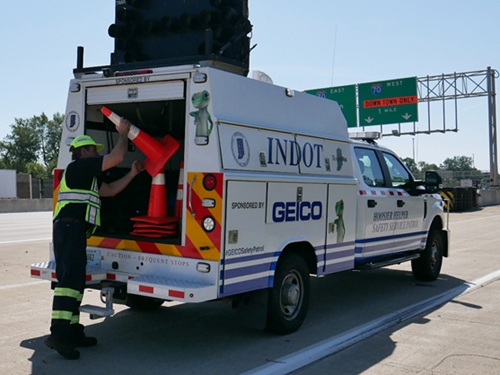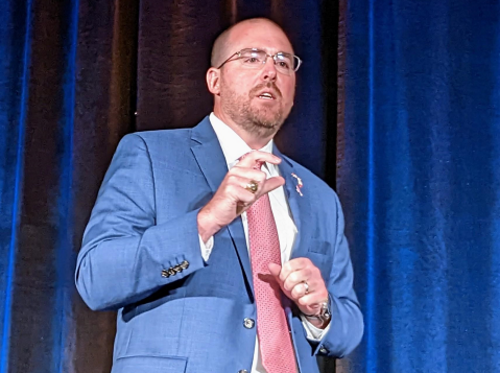Jared Perdue (seen above), secretary of the Florida Department of Transportation, believes state departments of transportation must make community engagement their “number one priority” going forward when it comes to infrastructure projects – or risk failure.
[Above photo by AASHTO]
“How do we as state DOTs continue to deliver infrastructure and be successful? It is about connecting the dots between what we do to every community we serve,” he explained in a speech to the 2022 American Association of State Highway and Transportation Officials Annual Meeting in Orlando.

“We are moving in a direction that if communities do not like, love, and appreciate product we deliver, then we will not be successful,” Perdue said. “We see this in every one of our projects now: local, statewide, and regionally. We need to make the community our number one priority, in terms of how we engage with them and give them a say in ultimate [infrastructure] solution we provide. We can’t just tell them what we’re doing; that is not going to work anymore.”
He said giving local communities a role in the infrastructure decisions state DOTs make is critical to the adaptation, evolution, and survival of state DOTs going forward. Yet it is also a partnership local communities want to have with state DOTs as well.
“They desire this engagement, even for something as simple as resurfacing roads,” Perdue pointed out. “If we build coalitions of local support around them, we’ll see the fruits of that labor. We’re also challenging our employees to re-engage with the communities where they live and work, where they reside with friends and families; not just serving them but working more in partnership with them.”
[Editor’s note: The Transportation TV video below captures all of Perdue’s remarks.]
Forging tighter and deeper connections with local communities is also vital to what Perdue believes will be a major challenge for many state DOTs in the near future: growth.
“It is no longer just about the delivery process for infrastructure but the resources needed to do it: They are finite and being stretched,” he said.
“For example, our infrastructure models are all planned on 2 percent to 3 percent population growth rate. Yet in Florida right now we’re experiencing population growth in excess of 20 percent, with some clusters of counties experiencing 40 percent growth,” Perdue noted.
“People are now suddenly waking up literally overnight to maddening levels of traffic – with a 30-minute commute expanding to an hour and a half,” he said. “So how we meet such transportation needs and doing it faster is definitely a big challenge. But we need to answer that call.”
 Nation
Nation
Confusion Reduces ‘Slow Down, Move Over’ Law Impact
November 14, 2025 Nation
Nation

